Saltbush groundcovers – 2 handy plants for habitat and bushfood gardens
Creeping and Nodding Saltbushes are two plants indigenous to Victoria that pop up around farms and bushland, self seeded by birds and small animals that eat the fruit. Both are valuable plants in revegetation projects, farm shelterbelt plantings, nature-strip, habitat and bushfood gardens, easy to grow, providing valuable habitat for lizards, their berries providing food for small birds. Both are in the plant family Chenopodiaceae, a great one to look to for tolerance of drought and of slightly saline soils, so they are suitable for gardens where grey water is used. Both are tolerant of drought once established, are frost tolerant and will grow in full sun or light shade and cope in a hot sunny position. Both have a central root system, so when used as living mulch they don’t impact on the plants they are grown around. Ongoing maintenance only involves pruning once a year if needed to keep tidy.
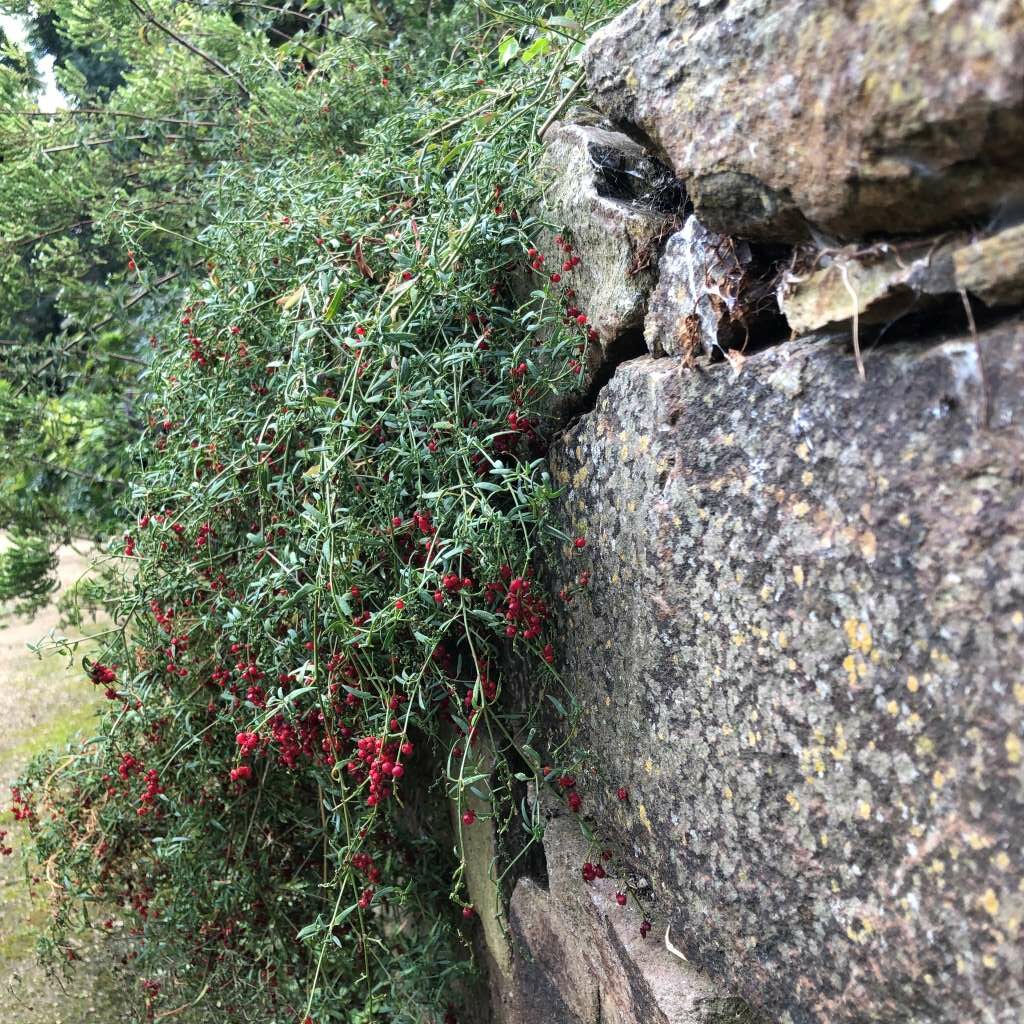
As far as edible and medicinal uses, I learn from a Wiradjuri woman, Min Mia, who has taught us that the tips of all saltbush plants have anti-viral properties. The leaves can be nipped off the plants, using secateurs or a sharp thumbnail, taking care to never rip plants, and nibbled, although the taste can be very strong so be ready! Leaves from a variety of saltbushes, including these, were used by early white settlers as green vegetables, after first soaking in cold water for around ½ hour then discarding the water and cooking the leaves. I must say I haven’t ever bothered to try cooking the leaves of these saltbushes. I occasionally nibble the leaf tips, but their berries are far more appealing to eat. So, let’s take a look at them in more detail.
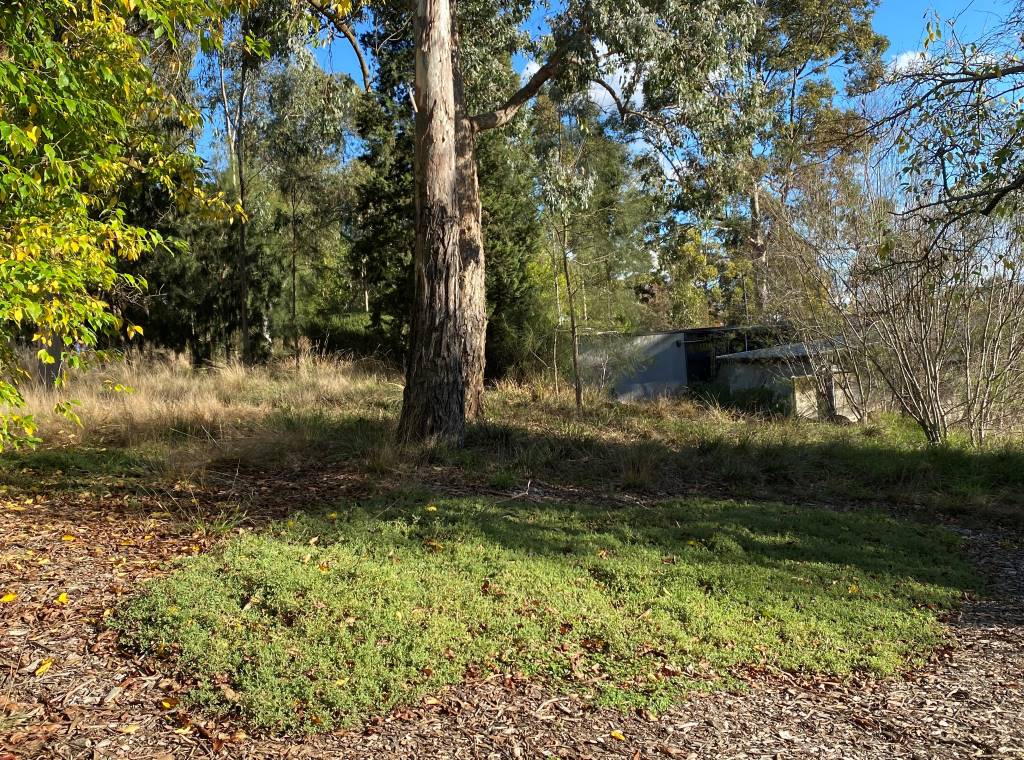
Nodding Saltbush, Chenopodium nutans, renamed by our botanist friends from Einada nutans, has the smallest berries of the Victorian saltbushes. These tiny bright red fruits are less than the size of a match head, so are fiddly to harvest. You can try running your hand along long branches of the plant, gently dislodging the fruits onto a tea towel or bowl, as suggested to me by a friend. The dark green leaves are shaped like arrow heads, and the plant spreads to 1m wide, and true to it’s other common name of Climbing Saltbush, can reach 1m high by growing over rocks or logs and smaller plants nearby, so is best grown near plants more than 50 cm high. It can also be seen appearing to ‘climb’ on chook house fencing or similar wire fencing, such is it’s enthusiasm to grow. Birds eat the berries and drop the seeds and I spot this plant self-seeding frequently around the family property in Cosgrove north central Victoria, wherever there has been less spraying and more mowing, or areas that have been revegetated, where it pops up amongst other plantings.
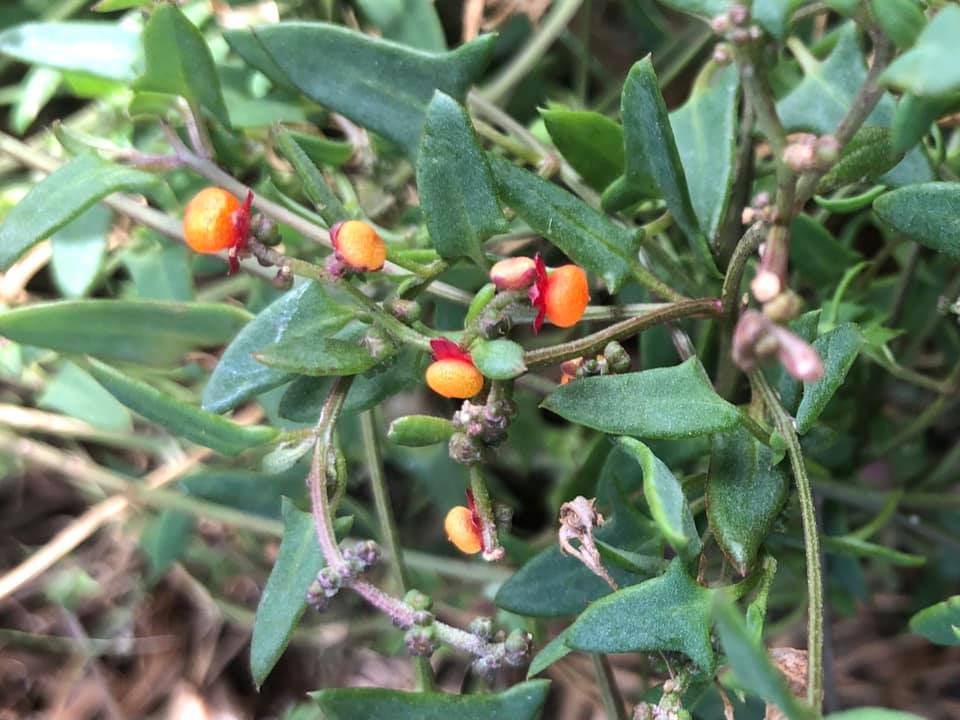
On a recent trip to the beautiful gardens at Heide Museum of Modern Art I was pleased to find healthy patches of Creeping and Nodding Saltbushes thriving underneath gumtrees. These photos are good examples of how well these plants can carpet the ground.

Creeping Saltbush, Atriplex semibaccata, has larger berries than nodding saltbush and usually silvery grey leaves which can be sometimes olive-green. This plant is an evergreen ground cover spreading to 1.5 m wide and reaching 50 cm high, often by scrambling over other plants. The slightly larger red berries are bigger than Nodding Saltbush, so are more easily picked and eaten. The fruits of both plants have a salty sweet flavour, the Creeping Saltbush fruits are are more juicy than the Nodding Saltbush fruits. They can be added to salads, fruit salads, used as garnishes on cakes or on savoury snacks such as dips, on smoked salmon canapes, or on bruschetta, if you’re using a yellow or green coloured tomato such as Wapsipinicon Peach or Green Zebra.
Look out for these handy groundcovers around your farm or land and protect them, see if you can spot them on bushwalk and plant a couple here or there in your garden. In the garden, they are both hardy, an easy care choice for living mulch or border plants, able to grow even under large native trees where not much else thrives. We usually stock both of these plants, you can buy them by clicking on the buttons above.
Both these hardy saltbushes are an excellent choice for school and community bushfood gardens, where you can encourage learning about them with our interpretive signs, available in economical corflute or hardy metal. Give these salty local native plants a go!

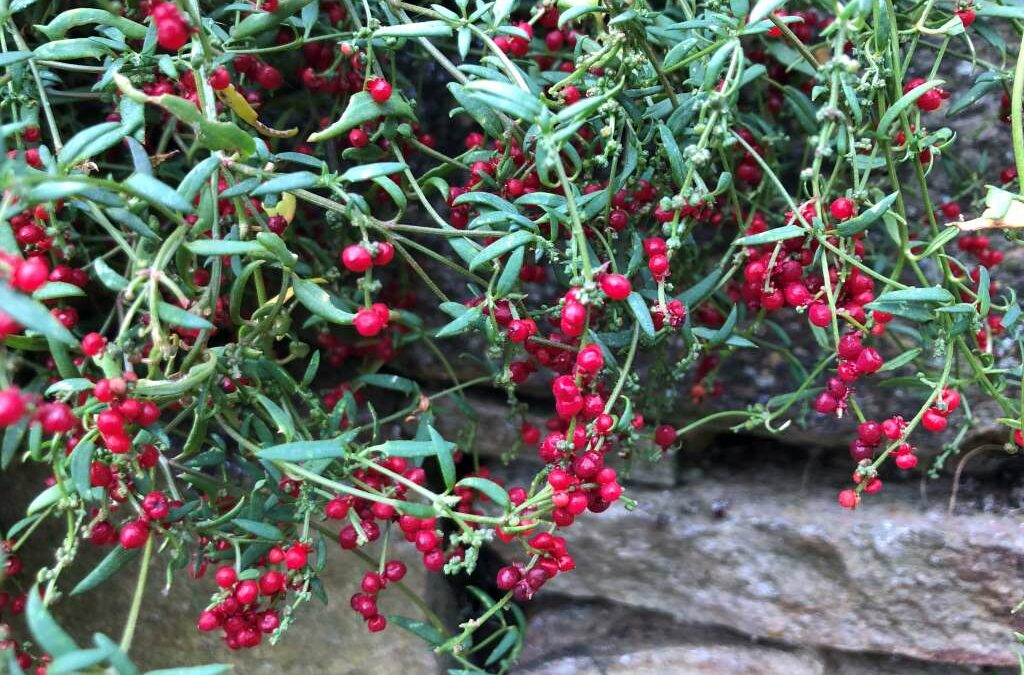
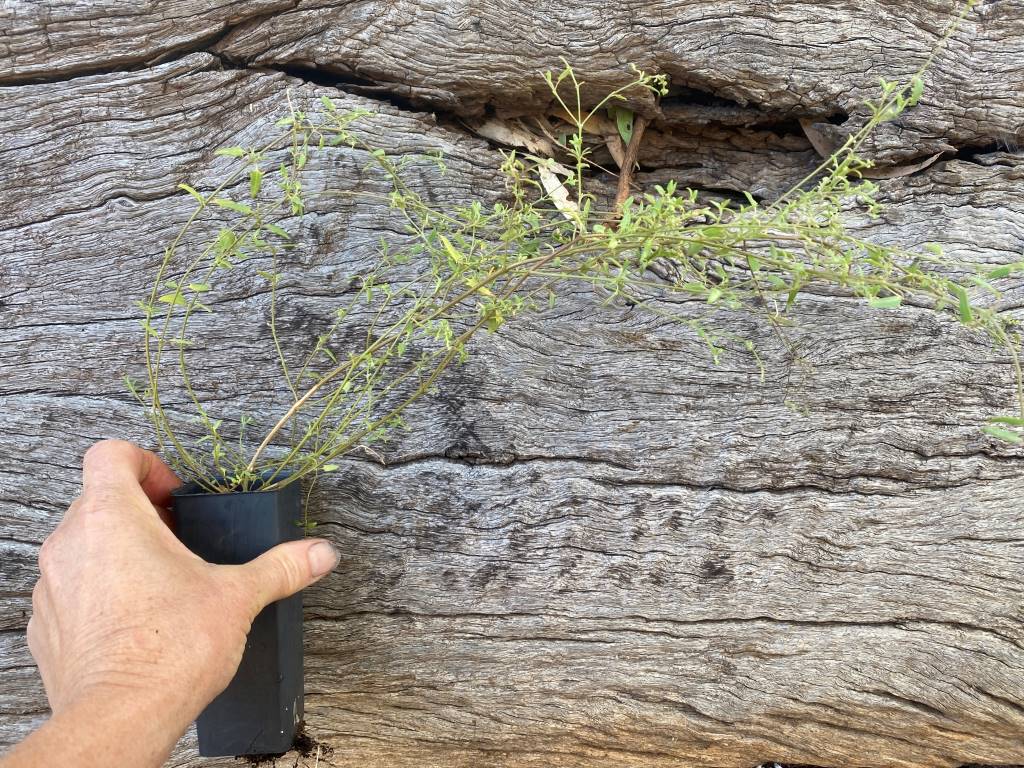
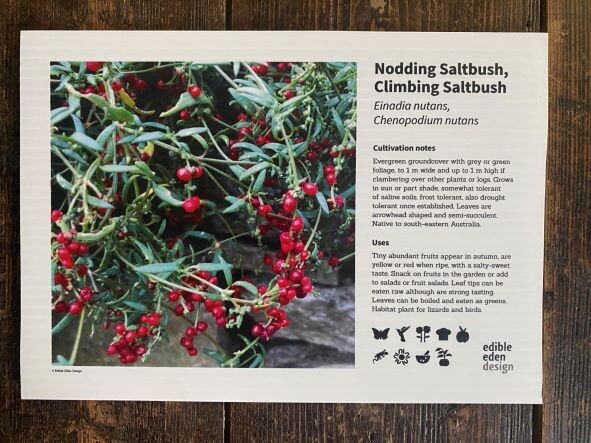
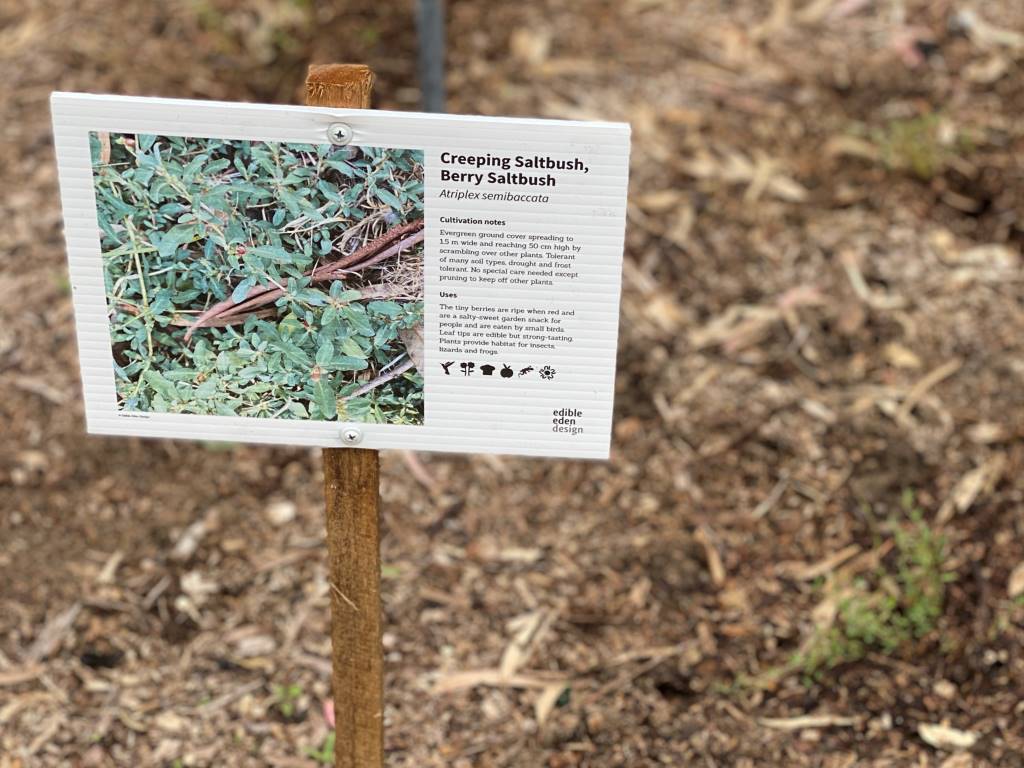
Recent Comments